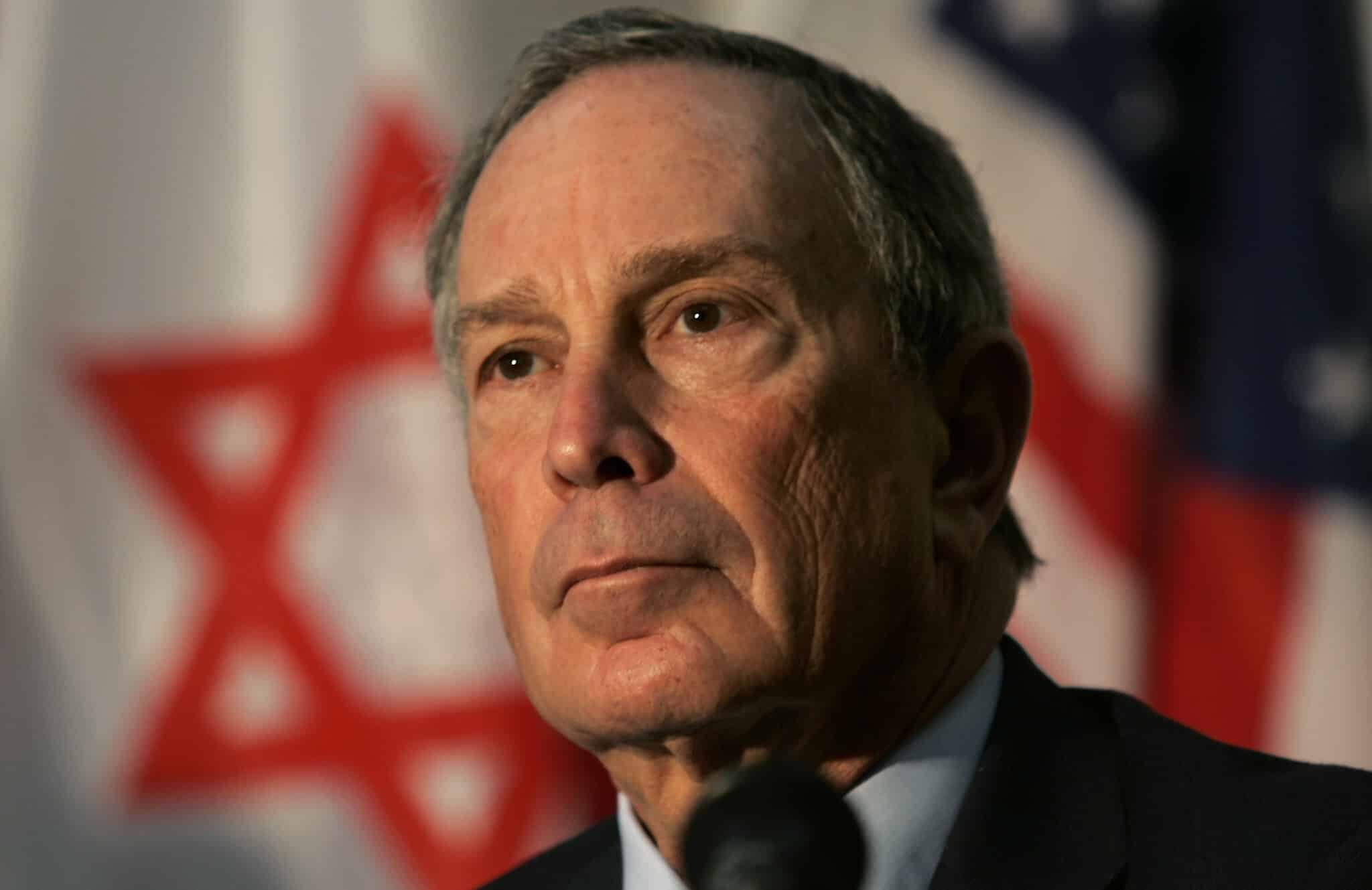Michael Bloomberg, the former Mayor of New York City and the majority owner of Bloomberg LP, is one of the 10 richest people in the world.
As of 2024, Michael Bloomberg’s net worth is set at over $96 billion, putting him just a few billion dollars from joining the centibillionaire club.
The American businessman earned his fortune through his information services and financial news company Bloomberg LP, among other investments. He is constantly grouped with the ranks of the richest people on the planet, including Elon Musk, Jeff Bezos, Bill Gates, and Larry Ellison.
In this article, we’ll tell you how he created his first $10 million and transformed it into nearly $100 billion today.
How Much is Michael Bloomberg Worth in 2024?
- Net worth: Over $96 billion in 2024.
- Major income sources: Bloomberg LP, investments, real estate.
- Bloomberg LP: Stake worth $53 billion.
- Philanthropic donations: Over $8.2 billion.
- Real estate: Properties worth over $150 million.
- Book proceeds: Unknown.
Michael Bloomberg Net Worth: Full Breakdown
The financial information regarding Bloomberg’s earnings from his company and investments is fairly limited, especially because Bloomberg LP is privately owned.
This isn’t unusual for men and women with such tremendous wealth as Michael Bloomberg. The former New York City Mayor came from a middle-class family and built a $10 million fortune in a company where he started with an entry-level job.
He then formed his own business and, as his company grew, his net worth reached into the billions of dollars.
Even today, Bloomberg owns most of his financial news company, contributing to the majority of his net worth. Here is what else added to his fortune over the years.
| Asset or Income Source | Contribution to Net Worth |
| Salomon Brothers salary | $9,000 per year in 1966 |
| Salomon Brothers severance pay | $10 million |
| Bloomberg LP stake | $53 billion |
| Philanthropic donations | -$8.2 billion |
| New York Mayor salary | $1 per year |
| Book proceeds | Unknown |
| White Star stake | $1 billion |
| Sycamore Partners stake | Unknown |
| Real estate, private jets, and helicopters | $150+ million |
| Total Net Worth | $96 billion |
6 Interesting Facts about Michael Bloomberg
- Early Life: Born on February 14, 1942, in Boston, Massachusetts.
- Career Start: Worked at Salomon Brothers before founding Bloomberg LP in 1981.
- Business Success: Grew Bloomberg LP into a multibillion-dollar information services company.
- Political Career: Served as Mayor of New York City for three terms and ran for president in 2020.
- Philanthropy: Donated billions to causes like public health, education, and the environment.
- Real Estate: Owns multiple properties, including a $50 million townhouse in New York City.
Latest News & Controversies
One of the more prominent recent controversies surrounding Bloomberg involves past comments that have resurfaced, specifically from a 2011 interview.
In this interview, Bloomberg made remarks about Black and Latino males, stating that they “don’t know how to behave in the workplace.” These comments have sparked significant backlash, especially considering Bloomberg’s 2020 presidential bid and his contentious legacy regarding racial issues, such as his defense of the stop-and-frisk policy during his tenure as Mayor of New York City.
Additionally, Bloomberg’s philanthropic efforts, especially his environmental initiatives, have been significant.
For instance, Bloomberg Philanthropies continues to lead global climate activism efforts, as he remains one of the largest individual donors for climate-related causes. However, his immense spending power also raised criticism during his 2020 campaign, where he spent hundreds of millions of dollars on advertising, leading to accusations of trying to “buy the election”
Early Life of a Media Mogul
Michael Rubens Bloomberg was born on February 14, 1942, in Boston, Massachusetts to his father William Henry Bloomberg, a bookkeeper, and his mother Charlotte Bloomberg. The Bloomberg Center at the Harvard Business School holds the name of Michael’s father to this day.
On several occasions, Bloomberg has mentioned that his father is the main reason why he became one of the world’s biggest philanthropists.
“He knew something about taking care of others,” said Bloomberg remembering his father by dedicating an emergency service station in Jerusalem to him.
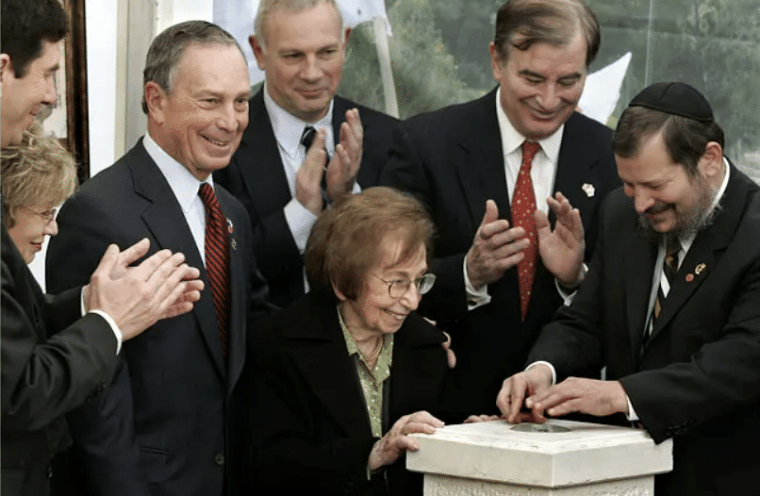
The Bloombergs are descendants of Polish Jews from his paternal grandfather and Lithuanian Jews from his maternal grandfather. They lived in Allston until Michael was two years old, when they moved to Brookline, Massachusetts, and settled in Medford.
Young Michael Bloomberg became an Eagle Scout at 12 and graduated from Medford High School in 1960. After graduation, he enrolled at Johns Hopkins University and was a member of the Phi Kappa Psi fraternity.
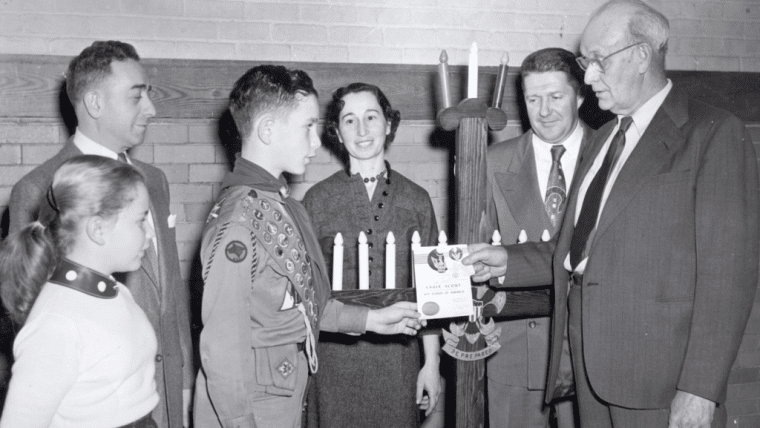
In 1964, Bloomberg graduated with a BA degree in electrical engineering and subsequently enrolled in the Harvard Business School to get his MBA.
He got his Masters of Business Administration from the Harvard Business School in 1966.
Michael Bloomberg came from a modest household. To cover his education at Johns Hopkins University and Harvard, he worked as a parking lot attendant and took out loans. As soon as he earned his MBA, he almost immediately jumped into the workforce, landing a job at the securities brokerage firm Salomon Brothers.
Michael Bloomberg Net Worth: Striking Gold in Media and Politics
It didn’t take young Michael Bloomberg long to test the business waters and decide to form his own company. He worked at Salomon Brothers right out of school and decided to found his own company in 1981. It was this company, Bloomberg LP, that became the main source of his extravagant wealth.
Let’s see how Bloomberg began piling up billions into his net worth.
Michael Bloomberg’s Early Career
Bloomberg dabbled in financial services when he started working in the now-defunct investment bank Salomon Brothers.
His first role at the company was counting stock certificates and bonds in the bank’s vault. Soon enough, thanks to his excellent performance, he moved up to bond trading and became a partner at Salomon Brothers in 1972. Four years later, he was a general partner in the company.
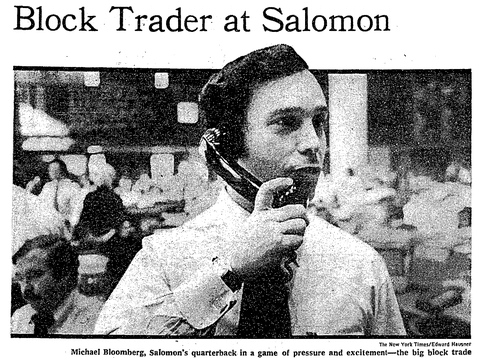
He reportedly earned $9,000 a year when he signed his initial contract at the company, though we don’t know how much he earned after he got all these promotions.
In 1979, Salomon Brothers removed him from the position of head of equity trading and sales and assigned him to run information systems, which was a demotion. However, this turned out to be a great opportunity for Michael Bloomberg since it put him in charge of a computer technology department.
So, when Salomon Brothers was acquired by Phibro, a commodity trading firm in 1981, Bloomberg got a severance package of $10 million, the equivalent of over $33 million in 2024.
Early in his career, Michael Bloomberg became a multimillionaire. He had a lot of money and no job, which prompted him to launch his own company.
The Beginnings of Bloomberg LP
Salomon Brothers became defunct, so Michael Bloomberg had $10 million to spend as he pleased. He decided to launch a business titled Innovative Market Systems.
Innovative Market Systems was a company that offered fast access to business information through pioneering terminals that could receive breaking news and data faster than any existing devices used by traders.
Bloomberg’s idea was a tremendous success and a year later, Merrill Lynch placed an order for their Market Master terminals, starting with 20 terminals and several conditions. Their requirements were for the machine to be capable of making specific bond calculations, among others.
You might think of Bloomberg as a regular news media company like the New York Times or the Financial Times but that’s far from the truth. Its main business model has long been the sale of these terminals (and eventually standalone software with the same utility).
Success of the Bloomberg Terminals
Michael Bloomberg’s experience in Wall Street impressed his first major client, Merrill Lynch, so they almost immediately ordered 1,000 more terminals, requesting that the company not sell their technology to anyone else for five years.
Bloomberg agreed with this condition and also sold a 30% stake in his company to Merrill Lynch.
Over the next two years, Michael Bloomberg continued boosting the capabilities of the Market Master terminal and created a portable product, a cutting-edge technology at the time. Realizing how great his product was, he went to Merrill Lynch in 1984 and asked to renegotiate the terms, which they accepted. At the time, he charged $1,000 per month per terminal, which was costly, but he was offering more than his competition.
Bloomberg realized that the value that Merrill Lynch captured using the speedy terminals was worth much more than $1,000 per month per terminal.
These machines marked the start of an incredibly successful venture that we now know as Bloomberg LP.
#FBF to the original 1980s @Bloomberg terminal keyboard featured @ScienceMuseum's new Information Age gallery pic.twitter.com/63Uw976WT8
— Mike Bloomberg (@MikeBloomberg) October 24, 2014
In 1985, the company was renamed Bloomberg LP. Three years later, the Wall Street Journal started using the terminal instead of getting their information from the Federal Reserve Bank of New York.
In the ten years after its launch, Bloomberg LP installed tens of thousands of Bloomberg Terminals. In 1992, it boasted 14,000 terminals, and two years later, this number grew to 31,000 terminals worldwide.
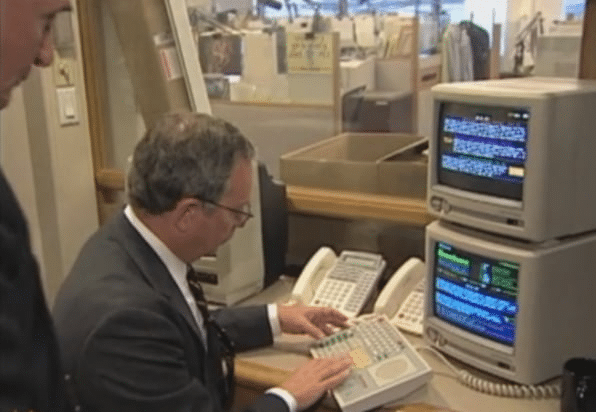
As of this writing, there are over 325,000 Bloomberg Terminals worldwide, each worth at least $20,000 per year.
Some of the other major products launched by the company over the years include:
- Bloomberg TV and Bloomberg News cable channel
- Bloomberg Radio
- Bloomberg Message
- Bloomberg Tradebook
- Bloomberg Markets monthly magazine
- Bloomberg BusinessWeek magazine (renamed from BusinessWeek in 2009)
Bloomberg LP’s Success Today
In 2018, Bloomberg LP had revenues of $10 billion. A year later, the company counted 20,000 people and over 300,000 terminal subscribers. In 2022, it recorded $12.2 billion in revenue.
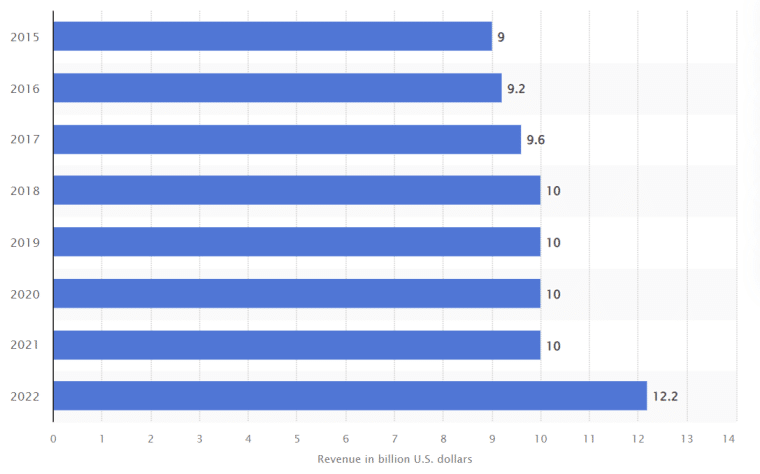
The vast majority of Michael Bloomberg’s net worth comes from the presumed value of his company. If the company ever came up for sale, it would be worth at least $60 billion considering that it generates a multibillion-dollar revenue every year.
Michael Bloomberg served as the company’s chief executive officer until 2001 when he stepped aside to run for office of mayor of New York City. He later returned to his CEO position in 2015 at age 73.
When he stepped aside, Bloomberg gave his position as CEO to Lex Fenwick. In 2012, he assigned Peter Grauer as the chief executive chairman of Bloomberg LP, a position he still holds today.
Today, Bloomberg reportedly owns the majority of the business with an 88% stake worth nearly $53 billion. In August 2023, he announced a series of leadership changes with Vlad Kliatchko assuming the role of CEO and Jean-Paul Zammitt assuming the role of President.
Michael Bloomberg as the Mayor of New York City
Michael Bloomberg stepped down as CEO of Bloomberg LP to run for mayor of New York. The election took place three weeks after the 9/11 terror attacks. Interestingly, Bloomberg ran as part of the Republican Party – and won – even though he was known as a lifelong Democrat until that point.
The newly elected New York City mayor assumed office in January 2002. He was the 108th mayor of New York. He remained in his position for two terms until 2008, when he pressured the City Council to change the terms and allow him to run for a third term, which was successful.
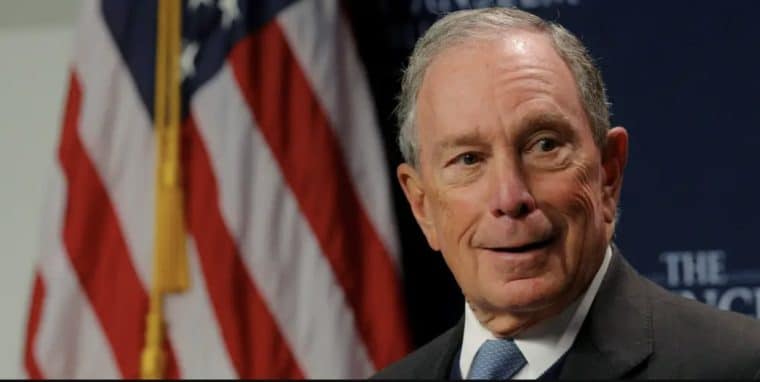
While in office, Michael Bloomberg invested $268 million of his net worth into re-election campaigns and spent $890,000 to provide free meals every day for his staff during the entirety of his role as a major, covering all three terms.
As the New York City Mayor, Bloomberg was entitled to a salary of $2.7 million, but he gave up this privilege and opted to earn a dollar per year. He also spent over $6 million to cover travel and security costs during his term.
During his tenure between 2001 and 2013, Bloomberg pursued fiscally moderate and socially liberal policies, established public charter schools, and many public health initiatives, as well as fighting for environmental protection and gun control.
Presidential Campaign
When his third term in New York City was up, Bloomberg returned to his position as CEO of Bloomberg LP. However, his career in politics didn’t end there.
On November 24, 2019, Michael Bloomberg entered the presidential race as a Democrat. Interestingly, Bloomberg self-funded his presidential campaign and didn’t accept outside donations.
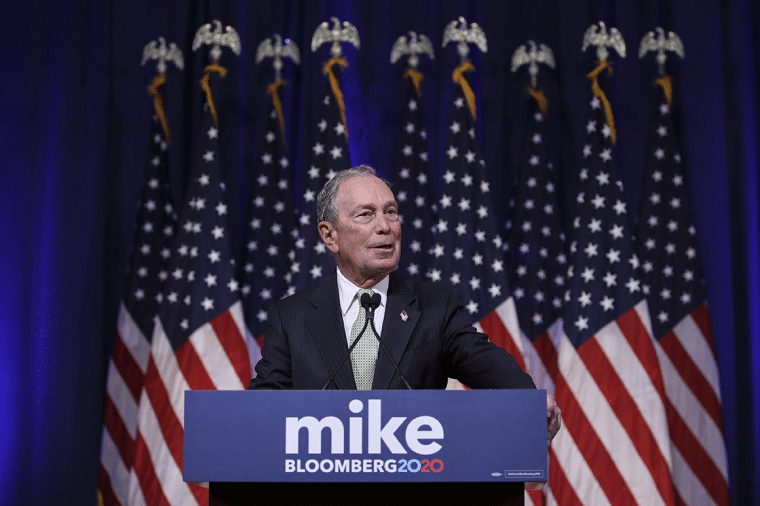
In his campaign statement, Bloomberg shared that his motivation for running was Donald Trump. He wrote:
I’m running for president to defeat Donald Trump and rebuild America. We cannot afford four more years of President Trump’s reckless and unethical actions. He represents an existential threat to our country and our values. If he wins another term in office, we may never recover from the damage.
In the end, Bloomberg’s campaign was one of the greatest failures in American presidential politics.
He spent about $1 billion of his own money for the campaign, with most of it going towards advertising in Super Tuesday elections. He ended up winning only American Samoa in the Democratic primary and ended with a pitiful 61 delegates (out of the available 1,000), despite his massive advertising expenditures.
He eventually gave up on his goal to replace Donald Trump soon after Super Tuesday. Bloomberg dropped out of the presidential race on March 4, 2020, knowing that he had no chance of victory.
Philanthropic Endeavors and Bloomberg Philanthropies
Bloomberg may not have been the best politician but he’s certainly an incredibly impactful philanthropist, with most of his donations and efforts going to protect the environment, as well as to education and gun safety.
Some of his more notable donations to date are:
- Donated $1.5 billion to Johns Hopkins University; Later donated $1.8 billion to Johns Hopkins University
- $50 million donation to the Sierra Club in 2011
- $100 million donation to Cornell University in 2015
- $500 million committed to fight global warming through the Beyond Carbon initiative starting from June 2019
- $30 million donation to the New York Metropolitan Museum of Art to fund audio tours
- $30 million donation to assist Latino and Black men
- Donated between $5 million and $20 million each year to the Carnegie Corporation
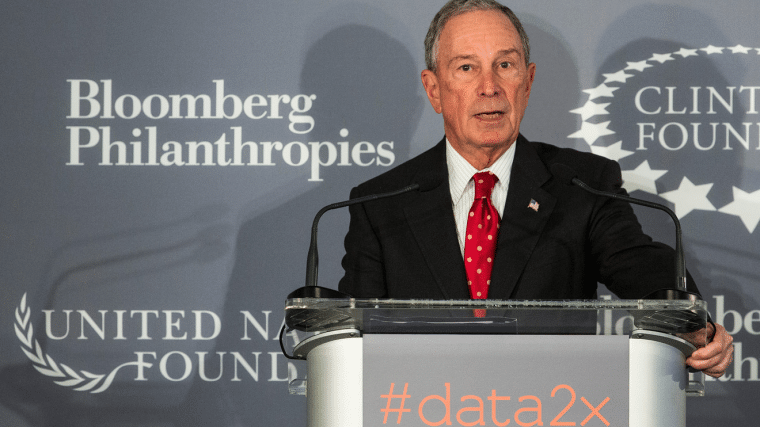
In addition to these donations, Michael Bloomberg has donated hundreds of millions to the Campaign for Tobacco-Free Kids, Johns Hopkins University Bloomberg School of Public Health, the World Lung Foundation, the Centers for Disease Control and Prevention, and the World Health Organization.
Overall, Michael Bloomberg has donated over $8 billion of his fortune to philanthropic causes. He is the founder of the Bloomberg Philanthropies Foundation, which he uses to donate or pledge to many causes.
Through Bloomberg Philanthropies, he committed to a range of urgent causes during the COVID-19 pandemic and its aftermath, investing in everything from researching treatments to vaccines. For instance, he co-founded a $75 million fund for nonprofits in New York City and $6 million to World Central Kitchen to serve meals to healthcare workers in the city.
Bloomberg is a known environmentalist and in 2023, the New York Times named him “the world’s single largest funder of climate activism”.
Not only did he donate $50 million to Sierra Club’s Beyond Coal campaign to shut down coal-fired power plants in 15 to 45 states, but he also announced an additional $30 million contribution to the Beyond Coal initiative.
The Bloomberg Philanthropies Foundation focuses on the arts, public health, the environment, government innovation, and education.
Through Bloomberg Philanthropies, he donated over $1 billion in 2019 and pledged or donated $767 million in 2018. Later on, his foundation gave a $6 million grant to the Environmental Defense Fund to support strict regulations on fracking in states with heavy natural gas production.
Between 2010 and 2013, Bloomberg served as the chairman of C40 Cities Climate Leadership Group to reduce carbon emissions. He also joined President Bill Clinton in merging C40 with his Clinton Climate Initiative and committed to donating $53 million through his foundation to the Vibrant Oceans Initiative.
In August 2010, Bloomberg signed The Giving Pledge, where wealthy people give away at least half of their wealth throughout their lifetime to charity. Some of the people who are part of this group include Bill Gates, Richard Branson, Larry Page, Tim Cook, and Ray Dalio.
According to the Chronicle of Philanthropy, he gave away the most money in the world in 2019.
Awards and Accolades
As a major philanthropist, a successful business, and New York City mayor, Bloomberg has received plenty of awards and nominations over the years, as well as honorary degrees.
Honorary Degrees
- Tufts University in 2007
- Bard College in 2007
- Rockefeller University in 2007
- University of Pennsylvania in 2008
- Fordham University in 2009
- Harvard University in 2014
- Williams College in 2014
- The University of Michigan in 2016
- Villanova University in 2017
- Washington University in St. Louis in 2019
Awards and Honorable Mentions
- Yale School of Management Award for Distinguished Leadership in Global Capital Markets in 2003
- Golden Plate Award from the American Academy of Achievement in 2004
- Barnard Medal of Distinction from Barnard College in 2008
- Robert Wood Johnson Foundation Leadership for Healthy Communities Award in 2009
- Ranked seventh in Vanity Fair’s 100 list of influential figures in 2010
- Award for Greatest Public Service by an Elected or Appointed Official at the Jefferson Awards Foundation in 2010
- Inaugural laureate of the Genesis Prize for Jewish Values in 2013
- Appointed Honorary Knight Commander of the Order of the British Empire by Queen Elizabeth II in 2014
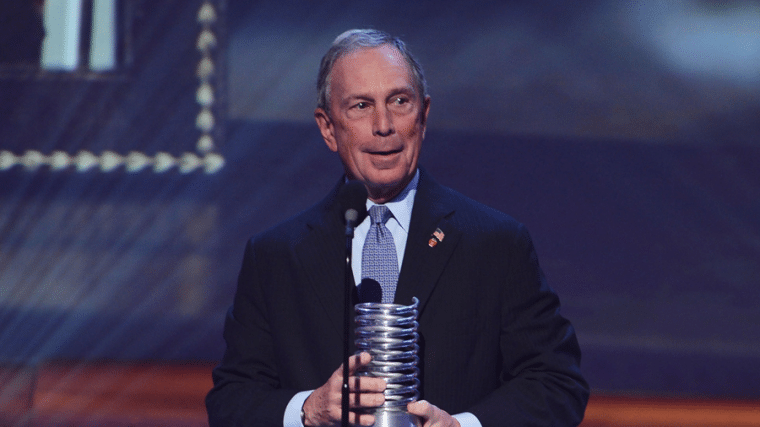
Authorship
In 1997, Michael Bloomberg and Matthew Winkler co-wrote and published the Bloomberg autobiography. The book was titled Bloomberg by Bloomberg and was published by Wiley. In 2019, a second edition of the autobiography was released ahead of his presidential run.
These haven’t been the only books Michael Bloomberg published over the years, though. In 2017, he and former Sierra Club Executive Director Carl Pope co-authored a book titled Climate of Hope: How Cities, Businesses, and Citizens Can Save the Planet. The book appeared on the New York Times hardcover nonfiction bestseller list.
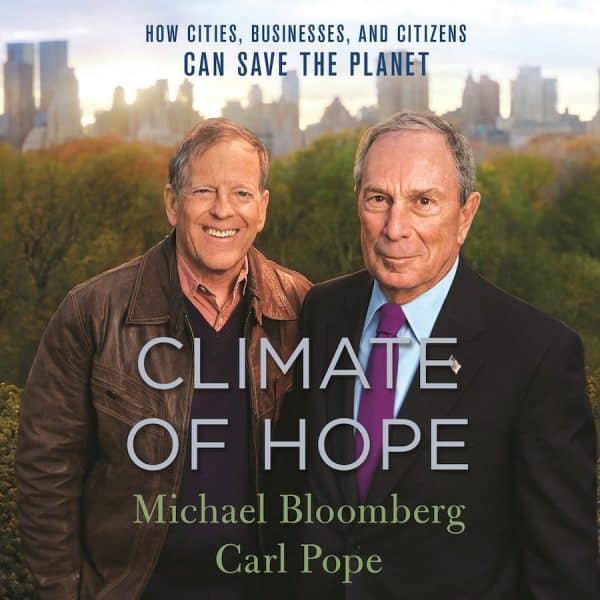
Bloomberg has also written numerous op-eds for The New York Times, talking about various issues, including his op-ed supporting efforts to fight climate change in 2017, and the op-ed about his $1.8 billion donation in financial aid for college students the following year.
What Does Mike Bloomberg Invest In?
The former mayor of New York City has made significant investments in businesses and assets over the years.
White Star Petroleum
Michael Bloomberg reportedly owned part of White Star Petroleum, a firm that uses hydraulic fracturing to extract gas and oil that operates in the private sector.
When the company filed for bankruptcy protection, the stake was publicly disclosed by court order, showing that Bloomberg’s family wealth fund Willett Advisors owned a 6.4% stake in White Star, assets worth up to $1 billion.
Sycamore Partners
The former New York City mayor reportedly had a stake in a private equity firm Sycamore Partners.
However, this business has been dealing with quite a few controversies over the years, especially since it has been accused of hollowing out the retail sector and aggressively downsizing newly acquired companies to load them with debt.
In 2014, Sycamore Partners turned to Wall Street titans and rich investors to raise money for new cash, and they reportedly tapped Michael Bloomberg’s net worth, raising money from his fortune. According to the Intercept, they received $136 million from Bloomberg’s wealth funds. As for his stake in this business, it is not publicly disclosed.
Other Business Investments
Other investments in the private sector include Metro Bank, a London-based consumer bank, as well as FGL Holdings, a holding company that offers life insurance policies in the Cayman Islands.
According to SEC filings from 2018, the Bloomberg family wealth funds owned 4.4 million shares in FGL. According to British regulatory filings, he owned 2.7% of Metro Bank
Real Estate
After jibes about property in the 2020 Democratic nomination debate, investigations revealed Bloomberg owned at least eight properties in New York. Other homes are situated in London, Bermuda, Colorado, and Florida.
It is said that the homes are used by his daughters and their children, too.
In more detail, his primary residence in New York City is most likely the 5-story townhouse he bought for $3.5 million in 1986. Over the next few decades, he expanded his New York City property by acquiring six units in an adjacent townhouse, creating a monster mega-property worth over $50 million today. This property is a block from Central Park.
Bloomberg also owns a property in Westchester County made of several purchases. The first purchase was in 2001 when he bought a 20-acre estate in North Salem. In 2011, he spent $4.55 million to expand the estate by 33 acres. We don’t know how much this property is worth today.
In Southampton, Michael Bloomberg owns a 35-acre estate that he bought for $20 million in 2011. He initially bought 25 acres, but added at least 10 acres more by purchasing nearby properties.

Not far from his Westchester County estate, Bloomberg bought another property in Armonk for $375,000 in 1993.
His Florida property is worth $8.9 million and has had a horse-riding community since 2006.
In Vail, Colorado, his four-bedroom condo is located at Mountain Haus and is worth around $4 million.
In London, he bought George Eliot’s mansion for $25 million in 2015. In Bermuda, he demolished a waterfront house and replaced it with a $10 million home three times the size of the original property.
We don’t know how many of these properties Bloomberg owns today, but there is no information on a sale made since the purchases.
Private Jets and Helicopters
While Bloomberg was the mayor of New York City, he also owned at least one private jet that he used to fly to Bermuda.
His purchases also include an Agusta Westland AW109SP helicopter that he bought for at least $7 million in 2013. Reportedly, he keeps a fleet of jets and helicopters at the Morristown Municipal Airport in New Jersey.
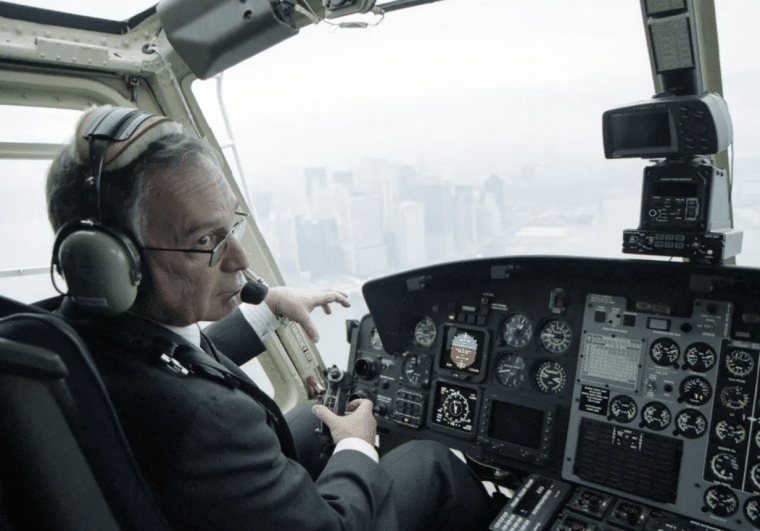
What Can We Learn from Michael Bloomberg’s Story?
Michael Bloomberg, the American billionaire businessman, politician, and former mayor of New York City, is one of the richest people in the world today. His success in business, politics, and philanthropy tells several valuable lessons we can all learn from.
For starters, Bloomberg exemplifies the importance of the entrepreneurial spirit.
Everything started when Bloomberg had a simple idea and launched Bloomberg L.P. His entrepreneurial spirit is evident in his willingness to take risks and innovate. If he wasn’t comfortable enough with the risks of bringing an entirely new product to market, he likely would have never become a billionaire.
Bloomberg’s career also shows how important adaptability is.
He transitioned from a successful career on Wall Street to entrepreneurship in just a few years. When he discovered a new and promising opportunity he didn’t shy away from it. He had a fortune in his hands and no job, and made a calculated and courageous step to form his own business, believing in himself and his skills.
Bloomberg’s venture into politics demonstrates the potential for successful leaders to contribute to public service and make a positive impact on their communities, a mission that Bloomberg continued to follow even after the end of his term.
Finally, Bloomberg has been an important advocate for many of the most pressing causes today including environmental sustainability and the harms of tobacco use.
He uses various charities to promote efforts to address climate change and other issues to great effect, highlighting the importance of investing resources into initiatives that will prevent the most harm.
His incredible record of putting his money to good use will hopefully help inspire the next generation of wealthy businessmen to do the same.
